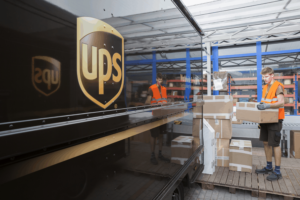How UPS Approaches The Growing Number of Population In Urban Centers
More and more people are moving to cities, bringing whole new challenges to the urban environment and business operations alike. According to data gathered by UN, at least two-thirds of the global population will soon live in cities by 2060, increasing its population by at least 2 billion people.
As a well-known brand in logistics service, UPS is now devising ways on how to create sustainable solutions.
“We want to give city dwellers more control over when, where and how they receive their packages.” UPS Spokesperson
Increase in gas emissions, traffic congestions, and higher demands on energy sources have raised some concerns among city officials and environmentalists. Now, businesses are investing in automotive industry research to find a more sustainable way of moving around the city.
UPS is now seeing the progress of merging final-mile deliveries where goods are delivered to consumers or business that placed the order. The company is currently collaborating with city leaders and their constituents to create a sustainable change.
Changing the way logistics work
Applying insight-driven models to various approaches can help identify the root cause of the problem and can provide solutions to common urban challenges. According to UPS Senior Vice President of Global Engineering and Sustainability Mark Wallace, it’s important for companies and the city officials to work together to redefine how both can achieve progress and find better ways to provide new solutions.
 The Supply Chain Transportation and Logistics Center (SCTL) is currently working with UPS, Costco, FedEx, Nordstrom, and the U.S. Postal Service to solve the delivery system problems that both the business sector and cities can’t handle on their own.
The Supply Chain Transportation and Logistics Center (SCTL) is currently working with UPS, Costco, FedEx, Nordstrom, and the U.S. Postal Service to solve the delivery system problems that both the business sector and cities can’t handle on their own.
The SCTL Team’s first project is to manage private and public operations of the Final-50-Feet Space. According to Finance Commerce, the final 50 feet of the urban delivery system starts when a delivery truck stops at a city-owned curb, alley, or any commercial vehicle load zone. It then extends along sidewalks and even through privately owned building freight bays.
To analyze the main issue in the urban logistics system, the team will design process flow maps and will collect data to analyze any possible scenario for a specific location.
By using the information gathered from the research together with creative planning, the team aims to make receiving and ordering goods much more efficient.
Do you experience trouble frequently when it comes to receiving goods you have bought online? Why not let us know over in our Facebook group.
If you liked this article and would like to engage with other small business entrepreneurs selling on marketplaces, join our [the_ad id=”41560″ inline =”1″]. You can also find us on [the_ad id=”41579″ inline =”1″], [the_ad id=”41573″ inline =”1″], [the_ad id=”41575″ inline =”1″], and [the_ad id=”41577″ inline =”1″] or sign up for our newsletter below.
SIGN UP. BE INSPIRED. GROW YOUR BUSINESS.
We do not sell your information. You can unsubscribe at any time.
Dave Furness
Dave is a Co-Founder of eSeller365. For over 10 years he has been involved with eCommerce with a particular interest in the marketplaces and the huge opportunities available for sellers when utilizing a multi-channel strategy. After a year of being the UK’s youngest eCommerce consultant, he built an education platform called UnderstandingE that showed the world how to utilize Magento as the “Third Generation of Multi-Channel software”.
Dave has also created a YouTube channel dedicated to entrepreneurship and eCommerce as well as a podcast dedicated to mental health awareness. When Dave isn’t working his main interests include learning and playing Chess, researching the Crypto and NFT space, and trying to find the nearest beach.

